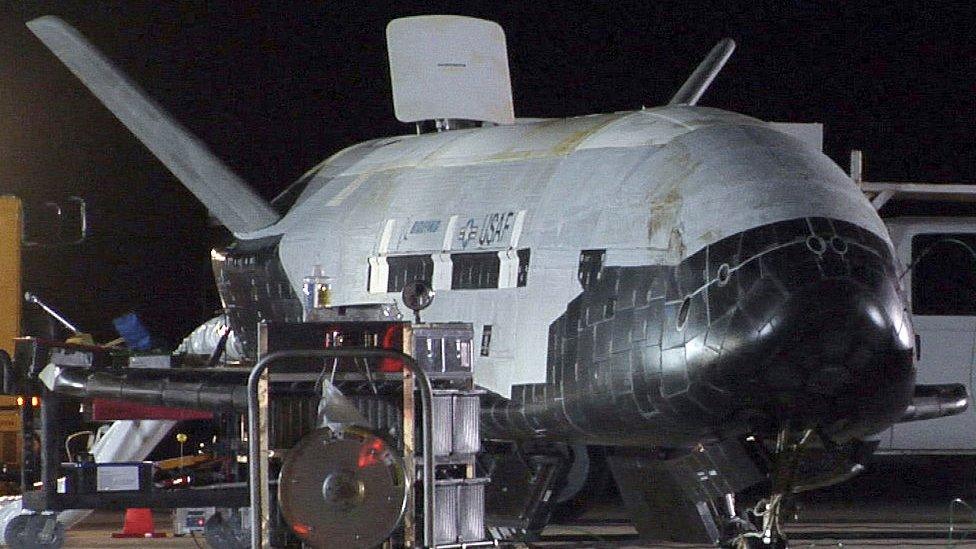Space: Secret US plane breaks record for longest orbit ever
- Published
- comments

Although it is often referred to as a spy plane, the US Air Force has never confirmed if the rocket is monitoring other countries or satellites.
A secretive space plane operated by US Space Force has safely landed back on Earth after completing a record 908 days in orbit.
The X-37B Orbital Test Vehicle (OTV) was launched on an Atlas V rocket in Florida more 2 years ago in May 2020.
The small plane is unmanned, which means there were no astronauts on board, so instead it has been controlled remotely from Earth.
The length of this mission has beaten its previous record of 674 days in orbit back in 2014.
What do we know about this spacecraft?
The X-37B safely touched down at NASA's Kennedy Space Centre at Florida's Cape Canaveral on 12 November at 5.22am.
It's reusable, so rather than putting 'single-use' satellites into orbit, this one can launch into space on a rocket and return to earth again and again with all the data it's been busy collecting.
However, the exact purpose of this record-beating mission and what the craft got up to is a bit of a mystery, with a lot of information being kept secret for security reasons.
The ability to conduct on-orbit experiments and bring them home safely for in-depth analysis on the ground has proven valuable for the Department of the Air Force and scientific community.
Officials have said that it's been conducting lots of scientific experiments, and testing all sorts of equipment - much like the International Space Station does.
One test was to collect energy from solar panels and beam it back to earth in the form of microwaves.
NASA has also given more of an idea of some of the other experiments, including one designed to test the effects of space exposure on seeds and a variety of metals.
Seed experiments will helps experts to understand more about how crops could be produced on missions to other planets and how possible it would be to have people living in space for a longer period than they do now.
With missions like Artemis 1 going to the Moon and future trips planned to Mars, it's a good idea to find out what would happen to metal and plant life in space.
And lift-off! X-37B is launched on an Atlas V rocket at Florida's Cape Canaveral in May 2020.
What makes this craft so special?
The fact that much of what it does is a mystery makes it pretty unique. We know it exists - so clearly it's not THAT top secret - but we don't know everything that its doing.
Originally the OTV was part of NASA, and looks like a plane a bit like old space shuttle, but was later passed to the United States Space Force (USSF) which made it top secret.
Model first flew in orbit in 2010
Launches vertically inside the nose of an Atlas V or Falcon 9 rocket
Orbits the Earth at around 400 kilometres
Re-enters the atmosphere remotely and lands like a plane
Lots of information about it has since been 'classified' and can only be seen by people with special access, which shows that top officials in the United States government are not wanting to give away all its secrets.
But it seems that the USSF are pretty pleased with how this mission has gone with Program Director Joseph Fritschen saying they had seen it "push the boundaries of experimentation".
- Published16 May 2020
- Published16 November 2022
- Published18 October 2014
